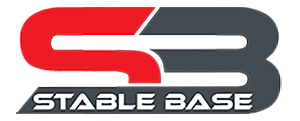I’ve worked with endurance athletes who swim, run, cycle and canoe. They all had a lot in common, including the problems they have regarding strength training. I’m going to cover the most common problems athletes, and their coaches, have with strength training, why it doesn’t always yield positive results and the solutions to those problems.
Problem: Struggling to fit in strength training because you spend all your time clocking up miles.
Solution: Remember it’s the athlete that goes fastest on race day that gets the chocolates, not the one that covers the most miles in training.
As an endurance athlete the temptations is to spend all your training time banking miles. This thinking is often the result of misinformation, fear and the culture of the sport. However, any problems or deficits you have simply become more ingrained as you rack up those miles. Endurance training also makes you weaker, and weaker equals slower and less resilient.
Your body is a non-renewable resource. Instead of planning your training program around how much riding, running, swimming or paddling you can do, try thinking ‘what is the least number of miles you can do to achieve the performance you are after? What things can you do to improve your performance other than doing more miles?
Instead of going for a 90-minute ride, doing a 20-minute strength workout followed by a 70-minute ride will yield a better ROI.
Instead of doing four runs in the week, (that fourth run is 25% of your training time, but will make less than 10% difference to your running performance) try doing 1 strength session and 3 runs.
Problem: Thinking you don’t need strength training because you aren’t a ‘real athlete’.
Solution: You have a body, and your life is better if it functions well. This makes you an athlete, like it or not.
A top notch athlete has a better diet than you do. Has more access to rehab and medical treatment than you. Has a longer and better structured training history than you do. Doesn’t need to fit their training in around their work and family schedule…training is their work! So, it’s even more important that a recreational athlete trains smart. Strength training becomes even more important as you age, and/or are just starting out.
And if you are thinking that one day you will be mixing it with the elite, start your strength training today. There are many athletes not reaching their potential because even though they’re national level on the race track they are rookies in the gym.
Problem: Making strength training the last thing on your schedule.
Solution: Your sport specific training is the most important thing to do, that doesn’t mean it is the first thing you should do.
Your strength is the foundation on which you build your endurance.
Your strength is the thing that will determine how many miles you can bank without getting injured.
Strength training is the way you can correct imbalances and potential problems to ensure your body is able to performing optimally.
Doesn’t it seem smarter to injury proof your body and equip it to move quickly and efficiently before making it eat up 100s of kilometres?
Plan out your training program. In the first third of your program commit 30% of your training time to strength work. Focus on using progressive overload and increasing your relative (strength/bodyweight) strength. This should include general, total body strength training and specific injury prevention exercises. In the second third of your program, when your miles are building up to their maximum, dedicate 10% of training time to maintain your relative strength and include injury prevention exercises into your warms ups for every endurance session. In the final third of your program continue with the injury prevention exercises and incorporate specific strength training (hill repeats, adding external resistance etc.) into 1-3 sessions per week.
To maximise the results from your training you need to build up your strength first then convert it to endurance. Make strength development the priority at the start of your endurance career, at the start of every season and at the start of each training session.
Problem: Not realising strength is a skill.
Solution: Strength training is a skill. You need to invest the time and energy into learning that skill before you will be able to increase your strength in a meaningful way. Too many athletes ignore this and think that they can jump into the gym and they will start to get stronger straight away.
Applying your strength is also a skill. It requires the fine coordination of not just multiple muscles but also the coordination of specific groups of fibers with-in each muscle. The skill of strength, just like the skill of tennis, swimming or playing the piano, requires consistent, regular practice. For the best results skill practice needs to be short, focused and performed when you are fresh. This means strengthening exercises are an ideal way to start your training sessions.
Problem: Training like a body builder
Solution: Body builders train to make their body appear a certain way. This doesn’t equate to athletic performance. Body building training is characterized by moderate weights and high volume and short rests. As an athlete you need to be training with heavy weights, long rests and a moderate volume.
Ironically many athletes actually use high volume and short rests in the gym trying to build endurance and avoid heavy weights because they, incorrectly, believe they will get too big.
If you still aren’t sure if you would benefit from working on your strength or don’t know how to go about it contact us via the comments section or email us info@stablebase.com. I look forward to hearing from you.

